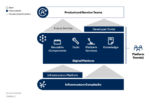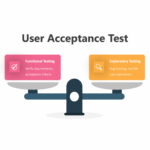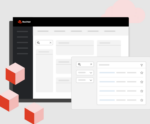In this digitally enabled, highly competitive world, to become successful is more challenging than ever. To thrive in this world, enterprises need to provide exceptional pre-sales and post-sales experience in addition to delivering best quality solutions in short release cycles. To achieve this level of excellence, organizations need to democratize the decision-making process without compromising the ability of individuals to use of their preferred tools. OpsHub delivers a suite of solutions to help them achieve this goal effectively – solutions that seamlessly integrate the best-of-breed tools into a unified ecosystem.
Bring Tools Together
OpsHub enables real-time integrations and comprehensive migrations between 50+ Application Lifecycle Management (ALM), DevOps, IT Service Management (ITSM), and Sales Force Automation (SFA) systems. OpsHub solutions connect development, quality assurance (QA), sales, support, and operations teams, to facilitate rich, real-time cross functional collaboration between them.
“Every person wants to use the best-of-breed tool for their role. As a developer, I may use Atlassian JIRA or Microsoft Team Foundation Server (TFS); as a product owner, I may use VersionOne or CA Agile Central; and as a quality engineer, I may use quality management solutions such as QASymphony’s qtest or HPE ALM,” said Sandeep Jain, CEO of OpsHub.
“However, if these best-of-breed tools are not seamlessly integrated, they will impede cross-functional collaboration and effective decision making processes, which would eventually lead to poor quality solutions and services”.
Elaborating on the importance of seamless integration, Sandeep said, “Imagine an ecosystem in which the epic, features and user stories created or revised in VersionOne by a product owner are automatically updated in JIRA or TFS, so that the developers know which epics, features and stories are in their backlog. Conversely, the product owner using VersionOne can also review how a user story is being interpreted by developers, developer’s plan, and the state of related activities in real time. This is what OpsHub does — connect all tools in the ecosystem so that the associated teams can collaborate in real time while using the best suited tools for their work.”
“Rich collaboration within the native tool is critical because it enables team members to operate and derive effective decisions in context of the tools best suited for them”, he further added.
Enable collaborative decision making
It is important to connect the ALM or DevOps ecosystem, not only internally, but also with the business and customer-facing systems, such as Salesforce Automation, Service Desk, and Self-Service portals. If the development teams have complete business context, they can not only deliver quality solutions, but also assist other teams in making better decisions.
As per a senior executive at a leading IT firm, “With OpsHub, we don’t have to compromise between collaboration and effectiveness – So we can deliver better quality products faster. With OpsHub Integration Manager, developers have the timely and comprehensive information, in the tools of their choice. This facilitates collaborative decision making with participation of all stake-holders, eliminating wasteful interactions.”
According to the development manager at enterprise software ISV, “We have recaptured 15-20% of our developer productivity. The developers always have clarity on which items are top priority, and we can give customers real-time status updates on the spot. With OpsHub, everyone is much more relaxed, and we can resolve more issues faster.”
Create Customer Obsession
In the new world of software-enabled systems and services, customer experience is crucial. Therefore, software teams need to go beyond “delighting customers” to achieving “customer obsession.” It is critical that business and customer-facing systems, such as Microsoft Dynamics and ServiceNow, are connected with the ALM/DevOps tool chain. An integrated environment ensures that account executives, while talking to customers, are up-to-date with the status of all outstanding issues and equipped to provide relevant updates.
At a software provider for student information systems, OpsHub has integrated CA Agile Central with Zendesk. According to the Director of Product Management and Implementation, “This has increased our development efficiency and improved customer service through clear and proactive communications. We now get a wealth of information that helps us really understand the issues being raised by the customers such as the number of defects by release and escalation by module. OpsHub deployment helped the company in further improving its solutions and supporting future growth.”
The cross-functional transparency across business verticals become even more important in a world where customer experience is the key driver for company’s and product’s success. “When you start allowing external drivers to accelerate your value chain, it leads to better value creation and better productivity,” Sandeep added.
Conclusion
Efficiency gains come from connecting the dots. In the context of the digitally enabled software-driven world, the goal is to connect all disparate elements of the ecosystem to create a productive, collaborative, and customer-focused environment. OpsHub empowers enterprises to instantly move closer to achieving this goal.
Learn more at www.opshub.com.






